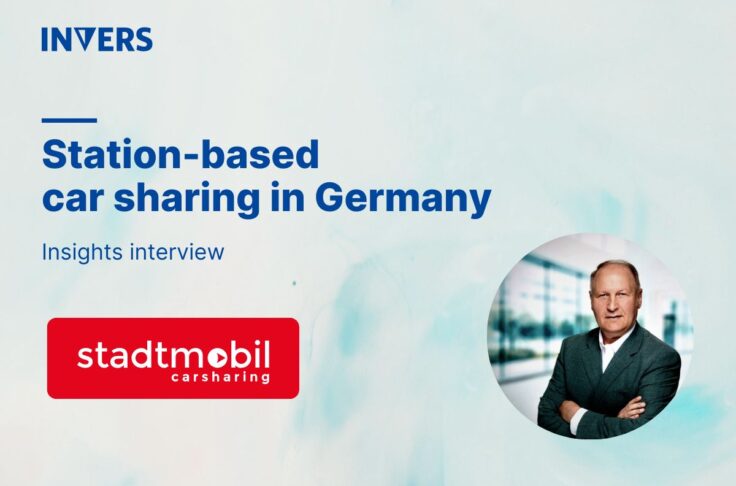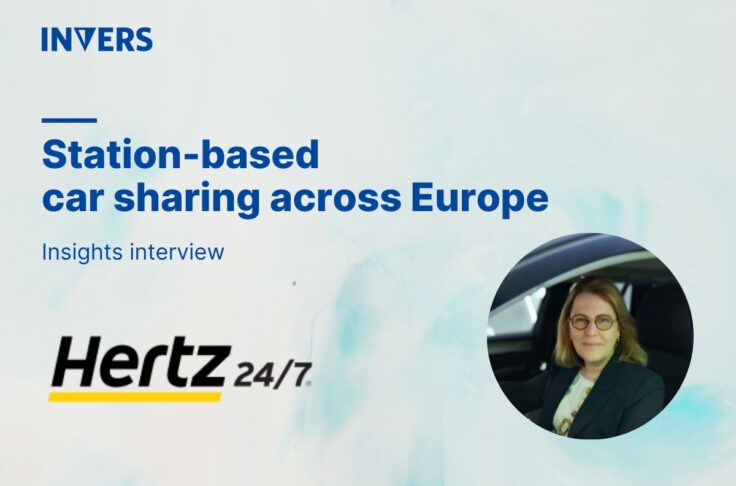3 Ways to Overcome Uncertainty in Micromobility
Summary
The pandemic has forced operators to adapt to the unknown-unknowns. Learning from the first wave, operators can take this experience to prepare for subsequent waves by quickly reacting to customer needs, focusing on locals and not tourists, and constantly adapting and innovating.

Most cities are in the midst of another pandemic wave, and lockdowns are being implemented once again, limiting how people move around the city. This time, however, operators have experience in dealing with a pandemic environment. Operators have more insight to better manage the change in utilization and consumer needs.
Enrico Howe, independent researcher at mopedsharing.com, shared insights he discovered while compiling a report for INVERS and fluctuo. This analysis looked at three periods: September 2019 (pre-COVID), mid-March to mid-April 2020 (first COVID peak), and September 2020 (post-first peak). Over these three periods, 14 cities from the 4 European powerhouse countries of micromobility – Germany, France, Italy, and Spain – were analyzed.
Overall, utilization for both moped sharing and kick scooter sharing dropped significantly when lockdowns were first implemented in mid-March to mid-April 2020. This is not surprising as people were discouraged from making trips that were deemed non-essential. However, what was interesting was that in September 2020, once these analyzed regions were back to a semblance of normal, moped sharing in France recovered to levels stronger than September 2019’s pre-pandemic levels. This could be that mopeds are used during the morning and evening rush, indicating use for commutes to and from work.
Kick scooter sharing, on the other hand, had lower utilization rates than moped sharing to begin with in pre-pandemic levels. Nonetheless, kick scooter utilization did not bounce back to those same levels in September 2020. The average number of trips per vehicles improved compared to the first COVID peak levels, but not as strong as moped sharing. One reason for this may be due to the fact that kick scooter usage represents more leisure trips.
To get more data, download the whole white paper.
With more insights on how the micromobility market reacted to the first lockdown, operators can better adapt and accommodate future market changes. Operators are also now better equipped to manage fluctuations in utilization and consumer demand during the second and subsequent waves. While there may still be changes, operators now have experience on how to quickly address the unexpected.
After an in-depth discussion at Autonomy Digital with Alexander Gmelin from INVERS, Julien Chamussy from fluctuo, and Julian Lehmann from TIER, we identified 3 ways to deal with uncertainty in micromobility:
1. React to Customer Needs
Overall, the initial reaction to the pandemic was shock. Streets were empty as people were ordered to stay home as much as possible. People became concerned about being in close proximity with others in public spaces, especially on public transit. While people began opting for more individualized forms of transportation such as privately owned cars, shared mobility becomes an attractive way to get around.
Julien Chamussy from fluctuo said that because people are less comfortable with public transit, private forms of transportation are being used, whether it’s a private car, bike, or kick scooter. However, if the right hygiene measures are put in place, people should also be able to meet their transportation needs with a shared car, shared bike, or a shared kick scooter.
Surface contamination is also an area of concern. Julian Lehmann from TIER had first-hand experience in dealing with this concern. While surface contamination is still being discussed and is uncertain, stricter cleaning measures have been put in place, such as increasing cleaning frequency. Julian also noted that it helps kick scooters are placed outside, as opposed to inside, making it less prone to potential contamination.
2. Focus on Locals
Because the pandemic has limited travel across borders, tourist volumes have significantly dropped. As a result, operators should focus on the locals, according to Julien from fluctuo. This may look like adapting pricing to local consumer needs, as tourists will not be coming back to the market for a while. Instead of placing kick scooters and mopeds at tourist attractions, they should be relocated to metro stations and transit hubs.
Operators can also think about how to streamline their operations to better serve the local market, according to Alex from INVERS. Now that speed to market and the competitive landscape has slowed down, it is time to focus on make strategic and economic decisions. Alex brings up an important point – with the right technology, operators should be able to easily make changes to their service offering without the hassle of too much development work. Being flexible and nimble in a pandemic environment is key to resilience and success.
In addition, Julien from fluctuo cautions that operators will need to evaluate the resources they currently have. Raising money during a pandemic is possible, but not ideal nor sustainable. Operators need to ask themselves whether it makes more sense to continue operating at a loss or to suspend operations and pay storage costs. Either way, operators should base their decisions on whether or not they can continue supporting local mobility needs to the best of their ability.
3. Adapt and Innovate
For TIER, the team was accustomed to working in a fast-paced start-up atmosphere. As a two-year-old company, they were constantly working at full steam. When the pandemic hit, Julian said his team had to slow down and adapt to this new situation. However, the change of pace allowed them to collaborate and brainstorm how they could use this as an opportunity to go above and beyond what the user needs and build a stronger company. One way to do this is by adapting pricing to meet different consumer needs.
Partnerships can also help broaden the reach of micromobility services. Julian from TIER recommends working with cities and public transportation agencies to better understand how to serve the local community. While this was important pre-pandemic, it is even more critical now in the midst of the pandemic so business models can be better tailored to meet local needs. These partnerships can also help operators like TIER react early and be in the driver seat to lead the way.
Crises can also be a trigger to accelerate change. Alex from INVERS has seen operators add air quality or noise sensors to vehicles, collecting data as additional revenue streams or to help them win government tenders. In addition, the pandemic has increased the popularity of subscription car and bike services, as these are longer-term rentals that better mimic private transportation options. If operators can adapt their business model from short-term rentals to accommodating long-term rentals, that would help build a strong future for the company.


